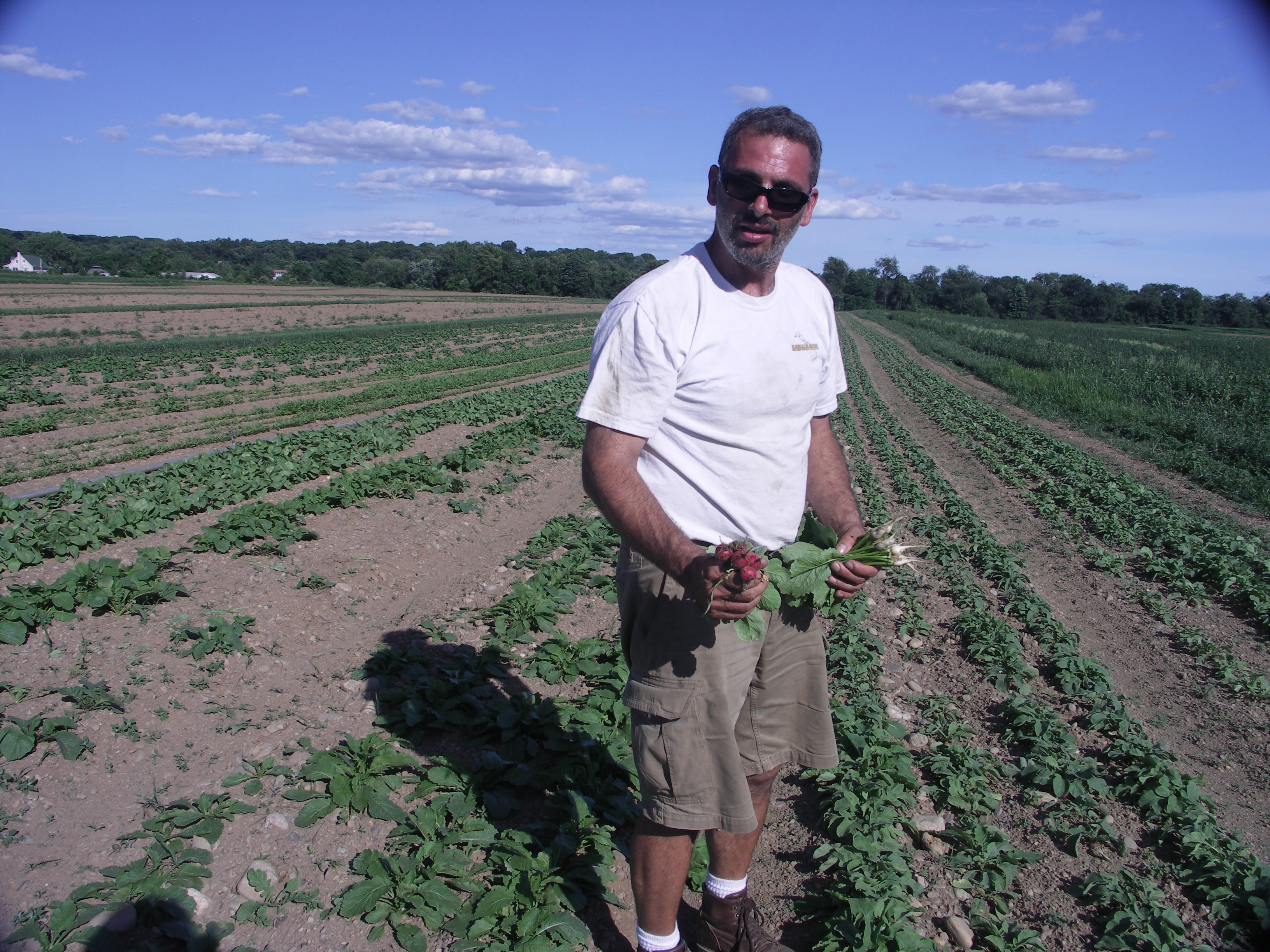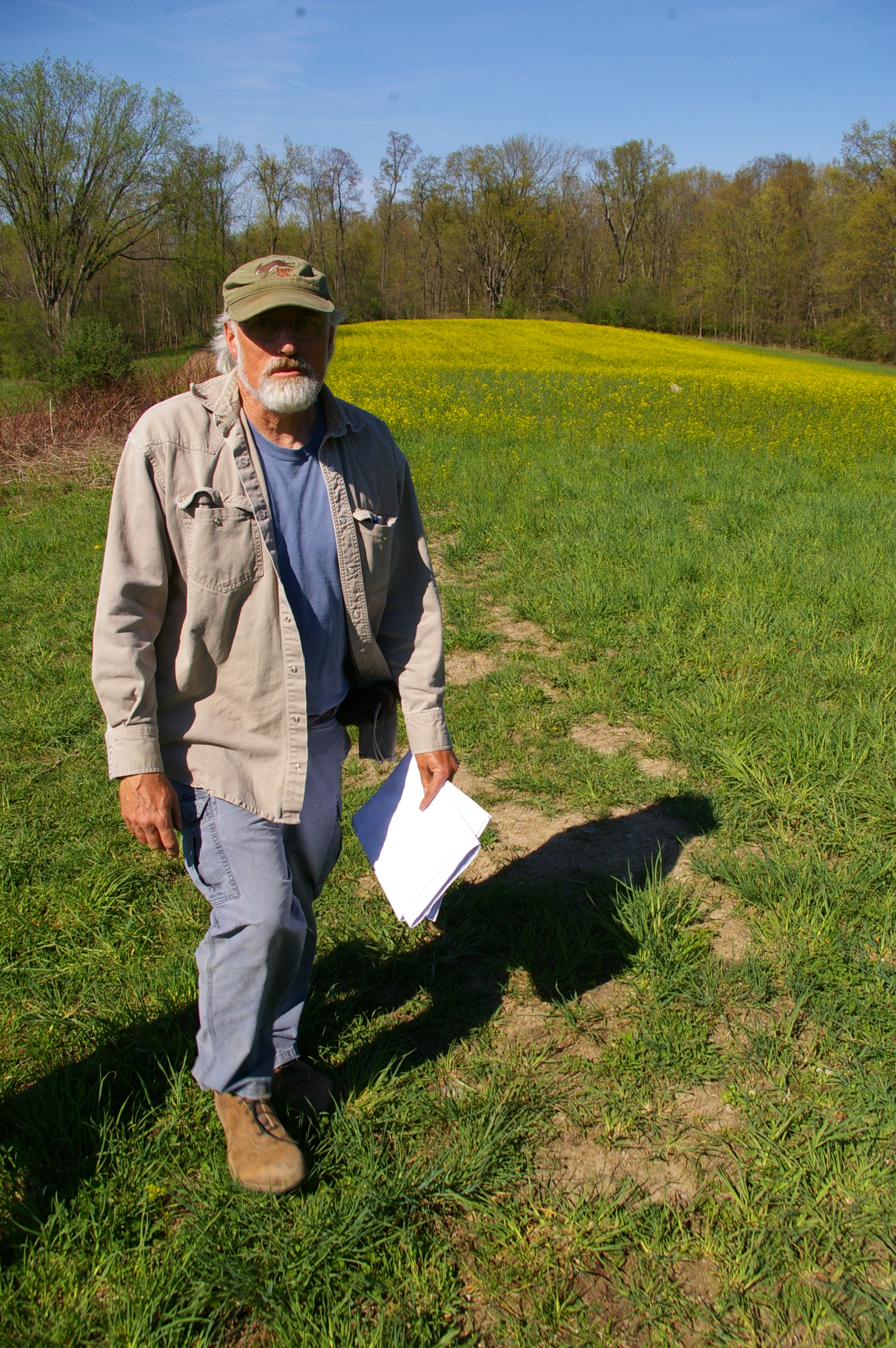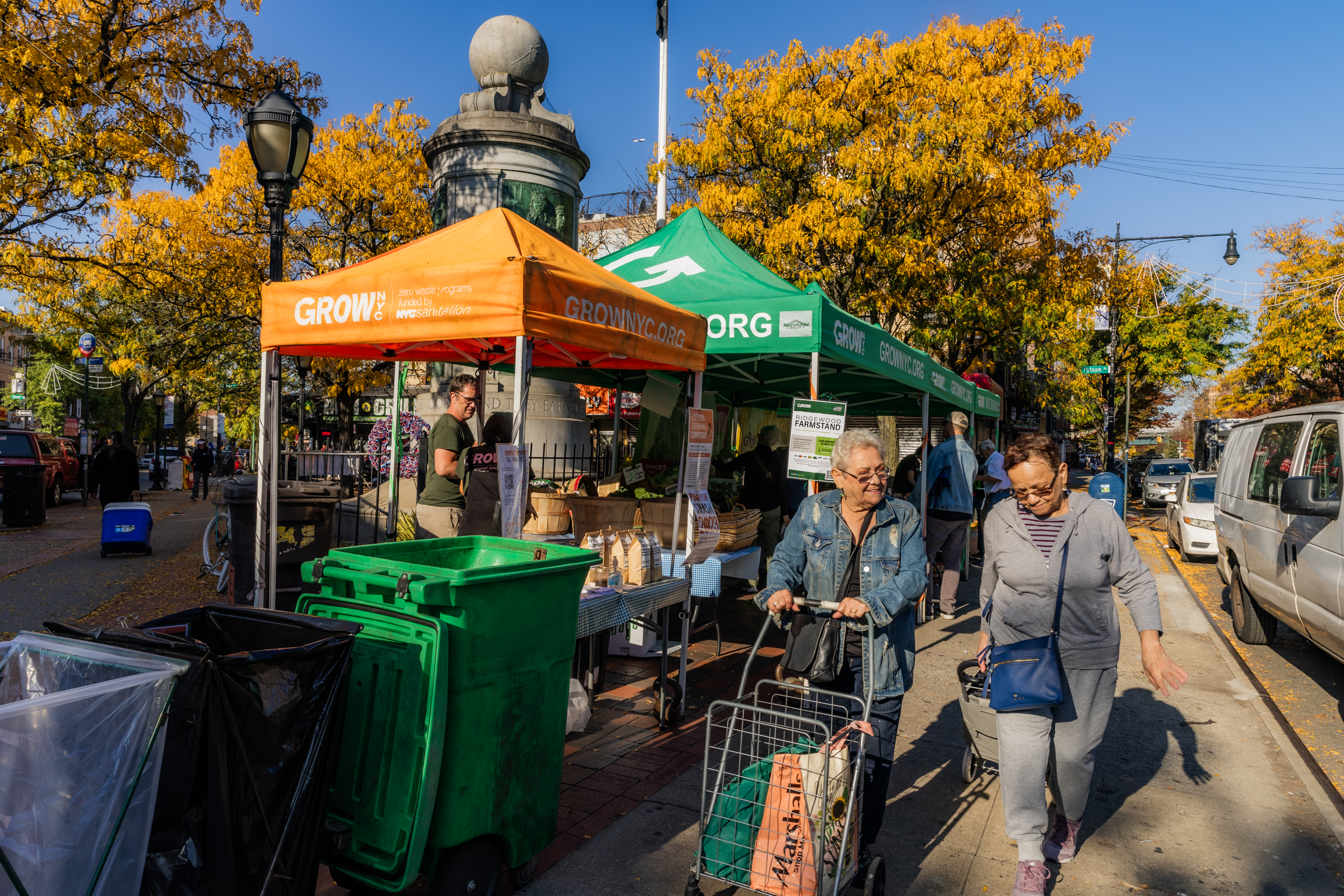KEN MIGLIORELLI OF MIGLIORELLI FARMS

Ken Migliorelli is the owner of Migliorelli farms, a 1000 acre diversified vegetable, fruit, and small grains farm in Northern Dutchess County. Ken and his team grow 400 acres of vegetables, 100 acres of fruit, and 400-500 acres in cover crop, small grains, and pasture. It’s that last 400-500 acres that we focused on for this interview. Read more below:
When did you start cover cropping?
Way back in the 90’s me and my father used to argue about cover crop. We were mostly growing rye and his point was that if you plant rye in the spring and think you can plant [a vegetable crop] into that rye later, you’re going to have a mess. The rye will take over. And he had a point. So my dad was in charge, and I had trouble feeding the soil the way I wanted to feed it. He retired in 1999, and when I took over control I started a more extensive cover cropping system. So I’ve been doing it intensively since 2000. My main with cover cropping is feeding the soil, but I also like it for erosion control.
What are your main cover crops and what do you use them for?
My main cover crops are oats, sorghum Sudan, rye, and hairy vetch and I’ll do different things with them. For example, I had a field that I’m putting into garlic this fall. I put it into Sorghum Sudan earlier, which I took out at the beginning of August and planted oats. The garlic won’t get planted until mid-October and the frost will have already burnt [the oats] down a bit. I plant other fields in oats later in the year, three weeks into August in preparation for next year’s spring planting. Those oats will winter-kill and the field will be ready to be planted in the spring.
I also plant some fields with oats early in the spring; fields that I know are going to be out of production all year. Oats like cool soil, so they get planted in the spring, in March. Sorghum Sudan likes warmer soil, so they get planted in the summer, or mid May. Then at the beginning of August I take that out and plant a hairy vetch/rye mixture (50/50). So for ground that I’m leaving out of production all year I have three different cover crops.
What kind of positive results have you seen from using cover crops intensively over the past 13 years?
Sorghum Sudan grows a lot of roots and has a lot of mass. I’ve seen my organic matter creep up over the years. When I started cover cropping intensively in 2000 my organic matter was at about 1.5%, and now, 13 years later, it’s up around 3-4%. It might not seem like a lot but it is. The Sorghum Sudan has a lot to do with that. Every time you plow you are burning carbon and you need to get that back in. I’ve seen a steady increase in my yields since I’ve been cover cropping.
Where do you see your cover cropping development going over the next few years?
My aunt and uncle bought a dairy farm recently that came with the haying equipment, hay customers, and hay fields. Before I had access to that equipment and those fields I was in a 1-2 year rotation with cover crops. Now I’m in a 3-4 year rotation. I have about 80-100 acres in alfalfa which I use both for nitrogen fixation and for hay.
I am also getting more into the production of small grains for income generation. I grow rye and vetch for seed which I combine and sell to other small farms in the region and I think I’ll continue to do that. I also just sold 8 tons of rye to a distillery across the river and I have two breweries looking for barley. I grow some wheat now and I’ll be putting in barley soon.
I’m continuing to try and grow cover crops in between my plastic. In ’09 it was a little bit of a nightmare but I’m trying it again. We had a twilight meeting a couple of weeks back and there were a lot of organic farmers on my farm talking about their own ideas in growing cover crop in between plastic. It was a nice collaboration and good to see a mixture of folks talking about the same thing.
Of the 1000 acres that I farm, 500 are in pasture and cover crops. That’s 50% of my farm and I don’t see that changing. It’s very important to me. My daughter is studying plant science right now and I think she understands better now what I’ve been trying to do. That’s exciting.
________________________________________________________________________________________________________________________________
MORSE PITTS OF WINDFALL FARMS

Morse Pitts, owner of Windfall Farms, has been growing cover crop on his farm ever since he first started his business 32 years ago. He plants a combination of red clover, winter rye, buckwheat, and oats for a wide variety of reasons. Read more about Morse’s cover cropping below:
I drill red clover in the fall and I mix it in with things from the mustard family like arugula, tat soi and last year we did a lot of turnips. I’ll harvest the cold-hearty mustard family stuff for sale at markets, and let the clover continue to grow. For me, clover is mostly a soil amendment, like a fertilizer. This year I’m going with red clover because it’s what’s available, but I’ve done white in the past.
The clover over-winters, and we wait until there is a good stand in the summer time to take it down. That leaves the field out of production for a few months in the spring, but I’m lucky enough to have enough land to make it work.
I also plant winter rye in the fall in pretty much any place where a crop has finished and I’m not planning on planting anything for late-fall or winter harvest. Rye is both a fertilizer and good for holding the soil, erosion control. I till that in the spring before it goes to seed. Sometimes, if the stand is good enough, we can use it for mulch (hay).
During the summer if there is any time when a field is being left open, I plant buckwheat. I like buckwheat because it keeps the weeds down. It’s good for bees but they can be an issue when you’re trying to till the field. You also have to be careful to not let it go to seed because it grows so fast.
Any space that I don’t use right away during the spring goes into oats, which is a good holding cover crop for just before something else is planted.
Oh, and did I mention weeds? Weeds are by far our number one cover crop. We love our weeds!
________________________________________________________________________________________________________________________________
RICHARDS GILES OF LUCKY DOG FARM

Richard Giles owns and operates Lucky Dog farm in Deleware county, a 150 acre organic diversified vegetable farm. He grows 60 acres of vegetables and the rest he puts into pasture and cover crop. He also has some of his land that is kept in permanent sod that his chops up for his compost pile. Learn more about his cover cropping techniques below.
When did you start cover cropping?
I’ve used cover crops since I’ve been on this farm and we started in 2000. We started cover cropping our first fall with some help from the Watershed Agricultural Council (WAC). They have always promoted cover cropping. Since then, as we’ve taken on more land, we make it a habit to cover everything.
What are your main cover crops and what do you use them for?
We're in a flood plain which gives us great soil but means that we’re very prone to flooding. So we have another reason (besides soil fertility) for cover cropping. We try not to keep any ground bare.
We use mostly winter rye mixed with hairy vetch. The rye has a really dense mass of roots so it’s great at soil holding. We also use it as a green manure, and use a neighbor’s combine to harvest our own seed for future plantings. We also have a distiller right here in Walton who makes whiskey using our rye. So that’s another goal, turn more cover crops into cash crops. Rye also make a great chop for compost, so we’ll chip it up and put into the compost pile. Being an organic farm we make our own compost.
Over the past couple of years we’ve started planting a little wheat and we’ve been expanding our acreage. We have about 20 acres of wheat this year, which is cover and cash crop. It’s dual purpose. We’re milling flour up here. I’ve sold wheat as commodity but never been to the mill with it like this. Like anything else there’s a lot to it. We have a pasta maker who uses it and we’re selling it at farmers markets too. People are also really excited about the wheat berries. That’s the nice thing about selling in New York City. People are willing to try new things.
We’ve also used oats in places that weren’t so much a flood risk. We plant the oats in the fall allowing them some good growth and then they winter kill. That leaves a really nice place for a spring planting. We also have started planting clovers in with the oat crop in some cases. We grow that all the way through the next season and when things come in behind that there is real nice nitrogen fixation. We leave fields like that out of production for almost a whole year.
What kind of positive results have you seen from using cover crops intensively over the past 13 years?
Erosion control is the easy one. Just this fall we had rye that had only been up for 3-4 weeks and we got a fall flood. Just 3-4 weeks of growth from the rye and we could see down through the water that the plants had taken root and were holding the soil in place. So just that growth helped us a lot. Its dramatic how much it holds.
We’ve also tried to build new organic matter using cover crops. Plowing in a heavy gross crop like rye is a great way to do that. We see internal drainage benefits and see benefits with the roots of our crop plants.
Where do you see your cover cropping development going over the next few years?
We’ve got a no-till drill that a guy up here rents to us, so we’ve started doing some [rye drilling] to come in behind crops when we’re late or have just harvested. The beans for example, we will get a frost tonight and probably lose the crop, but we can come in with the seed drill and plant rye directly into the beans without tilling. Basically we’re trying to get cover crop on every inch of the land that we’ve got here.




